“Blue slips” are blue-paper forms that Senate Judiciary Committee chairs send to home-state senators asking if they approve of judicial nominees in their states. During the Obama administration, a Democratic or Republican negative or unreturned blue slip killed the nomination. Pre-2009 chairs may have enforced laxer versions of the practice, but the 2009-16 chairmanships of Patrick Leahy (D-Vt.) and Charles Grassley (R-Iowa) allowed no exceptions.
Some Republican senators and commentators want to change or abolish the practice, lest Democratic senators use blue-slips to kill Trump nominations, starting with three on May 8 in states with Democratic senators, who apparently were not consulted about them. Arkansas’s Tom Cotton warned that “we can’t allow Democratic senators to continue to obstruct this president’s agenda.”
This sudden concern over aggressive blue-slip use—shock a la Captain Renault to find blue slips being used in here—contrasts with aggressive blue slip use under Obama. Senators used their blue slip prerogatives to forestall or veto nominations and give Trump over 100 in-place and announced vacancies, including over 30 that never had nominees.
Negative blue slips produced some dead-on-arrival Obama nominations, but the more pervasive impact of aggressive blue-slip were no nominations (“what’s the use?”) or extended White House-senator bargaining in search of mutually acceptable, or at least tolerable, nominees.
Senator Grassley complained in April 2013 that the high judicial vacancy rate that month was due to a dearth of nominees. In a post at the time, I explained that vacancies occurring after August of a presidential election year rarely had nominees by the following April, but that the 31 pre-August vacancies without nominees were concentrated in states with Republican senators. The pattern has persisted since then.
Here are snapshots of nominee-less vacancies, in-place or announced, in mid-April 2013, in mid-December 2014, after that year’s final confirmation; and in early July 2016, the date of Obama’s final judicial confirmation. (Excluded are vacancies in the District of Columbia and Puerto Rico.)
The differences aren’t dramatic, but they are consistent: most nominee-less vacancies were in states with a Republican senator and had higher median ages than those in two-Democratic senator states. The data suggest aggressive Republican blue-slip threats, even if other factors may have also been operating.
District Courts
| Nominee-less vacancies | Median months since creation or announcement | |||||
|---|---|---|---|---|---|---|
| Apr’13 | Dec’14 | July ’16 | Apr’13 | Dec’14 | July ’16 | |
| States with 1 or 2 R Senators | 25 | 35 | 25 | 16 | 10 | 14 |
| States with 2 D senators | 6 | 13 | 8 | 14 | 5 | 5 |
| TOTAL | 31 | 48 | 33 | 16 | 9 | 13 |
Courts of Appeals
| Nominee-less vacancies | Median (or actual) months | |||||
|---|---|---|---|---|---|---|
| Apr’13 | Dec’14 | July ’16 | Apr’13 | Dec’14 | July ’16 | |
| States with 1 or 2 R Senators | 6 | 8 | 3 | 13 | 16 | 9,38,54 |
| States with 2 D senators | 3 | 0 | 3 | 1,3,52* | – | 4,5,6 |
| TOTAL | 9 | 8 | 6 | 11 | 16 | 18 |
*A long-standing Ninth Circuit vacancy disputed by the California and Idaho senate delegations
In 2016, eight nominee-less vacancies were in Texas, ranging in age from five months to six years, including two appellate vacancies—one almost three years old, the other four and a half. Five of Alabama’s 13 district judgeships were vacant; none had nominees, and they had a median age of 20 months.
Comparable points in the Bush presidency saw far fewer nominee-less vacancies, but they were concentrated in states with Democratic senators—seven of eight nominee-less district vacancies in April 2005, 14 of 20 in December 2007, and 13 of 15 in July 2008. Nominee-less appellate vacancies at those points never exceeded four. Most were in California.
Another way to gauge aggressive blue-slip use is the time from a vacancy’s announcement or creation to the submission of a nominee. Longer times suggest, at least in part, more bargaining in the shadow of a threatened negative blue slip. For Obama’s district court and court of appeals nominations, the shortest times from vacancy to nomination were for judgeships in states with no Republican senators.
| District Nominations (2009-16) | Circuit Nominations (2009-16) | |||
|---|---|---|---|---|
| Number | Median Months | Number | Median Months | |
| States with 1 or 2 R Senators | 149 | 14 | 33 | 11 |
| States with 2 D senators | 138 | 10 | 22 | 6 |
| TOTAL | 287 | 12 | 55 | 9 |
For Bush district court nominees, median times to nomination were 11 months in Democratic-senator states versus eight in two-Republican senator states. For circuit nominees, the median times were basically the same, five to six months
Threat to democracy?
Those opposed—now— to the blue slip policy applied to Obama nominees claim that the policy is undemocratic. Hugh Hewitt wrote that “voters from Michigan, which went for Trump, closely divided Virginia or even deep-blue New York should [not] be denied judges because they have two senators who don’t like Trump’s nominees. Blue slips are simply and obviously deeply anti-democratic.” A Wall Street Journal editorial complained that “deference to the will of voters has fallen out of favor with progressives hyped to resist all things Trump.”
The idea that elections provide a valuable popular input into the selection of a life-tenured judiciary is not new. But one has to ask: if Trump’s nominees should brook no opposition from popularly elected home-state Democratic senators, why was it okay for home-state Republican senators—in Texas and Alabama, for just two examples—to veto potential or actual Obama nominations? The Journal’s claim that Democrats hope that Republicans will support their vigorous blue slip use because “the GOP could eventually do the same” belies the fact that they did “the same” for eight years.
Indeed, as to matters democratic, Obama’s elections, by fairly substantial majorities, should have given him greater authority to reshape the federal judiciary than did Trump’s, who squeaked into office with a substantial popular vote loss.
The Brookings Institution is committed to quality, independence, and impact.
We are supported by a diverse array of funders. In line with our values and policies, each Brookings publication represents the sole views of its author(s).
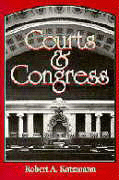
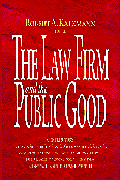


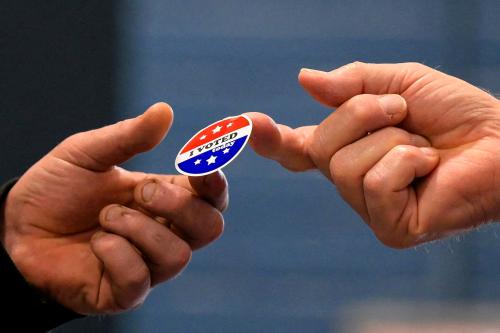
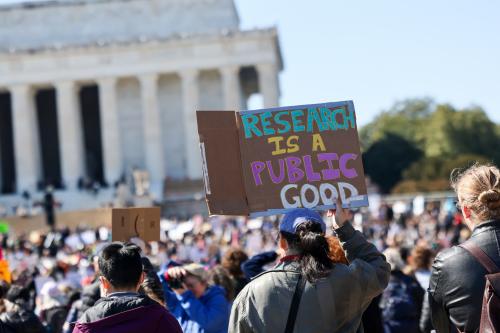
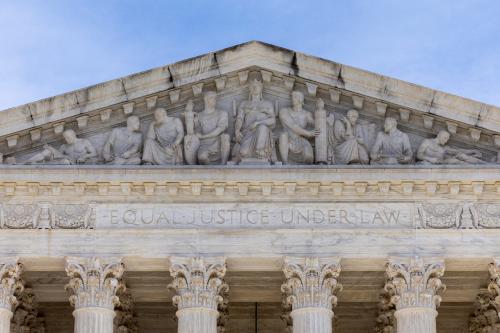
Commentary
Senate GOP used “blue slips” to block Obama judicial nominees, but now wants to trash the practice
May 25, 2017